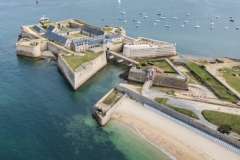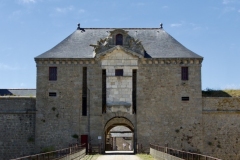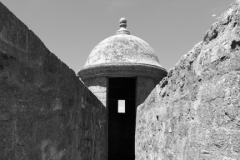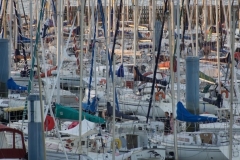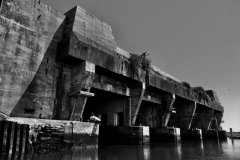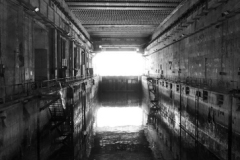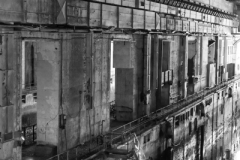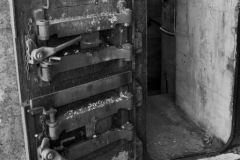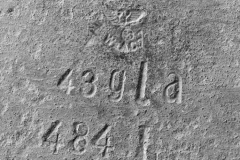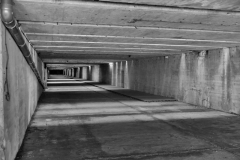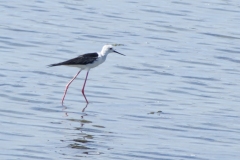The moment you leave the sea and turn into Blavat River towards Lorient, you are faced with two spectacular buildings dominating the east and west banks. Built 400 years apart, these fortresses had the same purpose – to display power and dominance in times of war.
To the east bank is the Citadel of Port Louis. Built in the 16th century by the Spanish, it looms over the sea entrance and thus is in a strategic position to defend the harbour. As the sun sets, the steep corners of this Moorish fort cast razor sharp shadows into the sea below and plunges the town of Port Louis into the evening gloom.
On the opposite bank are three enormous submarine pens built by the Germans with local labour in 1941. These colourless concrete amphitheatres had the single purpose to service and maintain the devasting killing power of the U-boat fleet in the battle for the Atlantic. There is no beauty here other than perhaps a memorial to those from both sides who were lost at sea fighting for what they felt was right.
Outside of these buildings are 4 lovely marinas – Port Louis and Locmiquélic sitting to the east and Kernével and Lorient to the west. Our marina contract allows us two free nights per stay at a great many ports, including all four here on the river and so we spent time at them all. What we saved was largely reinvested in the local economy by purchasing various libations in order to rehydrate due to the 38 degree heat wave that hit us.
Port Louis and Locmiquélic are quintessential French towns with cobbled streets lined with tumbledown buildings. The Citadel was built to protect Port Louis which in the 16th and 17th centuries was the only city on this estuary. Today the Citadel houses a museum dedicated to the French East India Company. Although the British and Dutch already had a good hold of the trade in India and China, France also wanted a bit of the action. It wasn’t long before French ships laden with treasures from the far east would arrive here to unload. Very quickly though, Port Louis became too small to handle this growing trade and so the company took to the other side of the estuary and set up a new trading post calling it L’Orient (all makes sense now).
Returning to the Submarine Pens, it is difficult to describe the enormity of these soulless buildings without actually being there. The ground they stand on was previously wasteland but by working 24 hours a day, they were operational in seven months and could house and service between 25 and 30 submarines at a time. As the submarines arrived they were guided onto an enormous underwater trolly which lifted them out of the water and was towed to a separate building on the site. This was, and still is, the only dry submarine service centre in the world.
To protect this massive war machine the roof is some 10 metres thick and although it was regularly bombed by the allies, destroying 90% of Lorient as a result, the pens themselves were never damaged sufficiently to stop the day and night this Nazi production line. In fact, these structures were so strong that post-war, the French dropped a 5 ton bomb on the main building in an attempt to destroy it. The bomb was released from an aircraft flying 1 km up so that it could ‘pick up a bit of speed’ when dropped. Whilst it was a perfect hit and the bomb detonated as planned, all that could be seen once the dust had finally settled was a dent! Having given up trying to destroy the pens, the French Navy took them over as their own submarine base and was only decommissioned in 1995.
A few months after the Normandy Landings the Americans surrounded the pens but unfortunately by then all the U boats had escaped. As the entire estate had been built as a fortress, designed to be self-sustaining (including sufficient food for an army) should Lorient ever fall, the German army defended the pens for a further nine months before surrendering.
As for our remaining time around Lorient and the Blavet, we swam off beautiful beaches and walked through public fountains. We cycled through nature reserves ticking off wading birds galore, ate oysters and barbecued off the back of LJ
8th July 2022
Trip Mileage 10 miles
Mileage Completed 1907 miles
